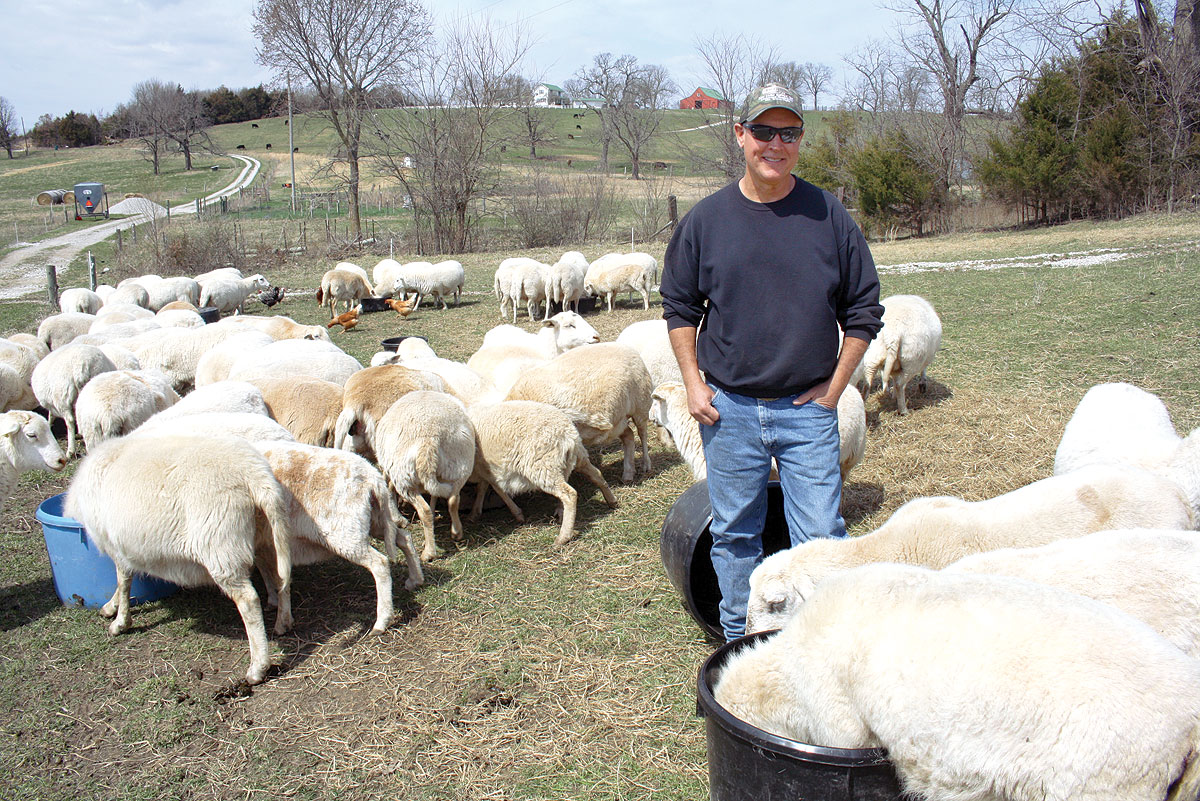
On their 112-acre Webster County farm, near Niangua, Mo., Jeff and Kim Bradford raise Angus cattle. Some are registered, but not all.
They bought the land now known as Bradford Farms in 1996, and have lived there since 2000. They have Angus cattle because “that’s what the market dictates; black cattle,” Jeff said.
“It seems that’s what draws the premiums,” Jeff explained. “Even people starting new herds seem to want to get into it because they see that’s where the top end of the sales are generally focused around.”
Another huge asset, in Jeff’s opinion, is that the industry has put a lot of research into the genetics.
“They’ve really tried to build the breed focused around bettering the quality of meat, the tenderness and size of the rib eye,” he said. “They’ve put a lot of research and effort into getting them where they are.”
Jeff has not always had Angus. He grew up on a small farm near Strafford, Mo.
“I always had eight to 10 cows,” he said. “As a kid in the 1980s, we raised a lot of Holstein bottle calves, up toward 30 to 40 at a time. I’ve always had the desire to farm.”
He worked on a dairy while in high school and spent a lot of time around the dairy industry.
While working in a factory in Springfield, Mo., for 21 years, Jeff slowly started growing their farming operation.
“Once we felt like it was where I could make it on my own, I quit that and went to doing this full-time, along with other supplemental things on the side; the fertilizer business, custom farming, combining, stuff like that,” Jeff said.
Jeff and Kim try to maintain about 100 momma cows.
“I started out with a lot of mixed breeds, Charolais, Hereford cross. We kind of set goals and our goal for 2017 was to be 100 percent black-hided. We have met that goal,” Jeff said.
They have been raising replacement heifers for about the last six years.
“We retain a lot of our top end heifers, then I buy a lot of heifers and put them together to sell in groups as well,” Jeff said.
Jeff raises his own hay. He has mostly brome and fescue grass hay.
“Over the last few years we’ve done a lot of haylage, baled silage. We feed a lot of wheat, beans and millet haylage,” he explained. “It costs more to do that, but feeding the wet hay, you can feed a lot less of it. It seems like, in our operation, it takes about half as much of that as it does the grass hay. So from an economical standpoint it works out better for us. I think that is a key to some of our success. We really focus on good nutrition with the high-quality feed and mineral. It aids in our type breeding season.”
The cows and heifers are put through a pre-breeding exam every year to make sure they are ready to breed. He said, “We do all of our work on vaccinating and worming in the spring before breeding season. If we see any problems then, we can cull that animal out before.”
He rarely gets a temperamental cow, but doesn’t keep them.
“My goal is to constantly grow, but just to grow to a manageable size. I feel like if you don’t continue to try and improve, or grow your operation, you will look up one day and be left behind,” Jeff said. Their next goal is for his wife, Kim, to be able to stay home and help at the farm full-time.
In 2008, a tornado came through and the Bradfords lost their house, barns, several cattle, and all the fencing. Jeff said, “It was a struggle and a trying time in our life,” Jeff said. “Faith and family is a big thing in our life. You don’t know what’s around the corner. I thank the Lord for letting us do what I like to do for a living and for having a supportive wife and family.”







